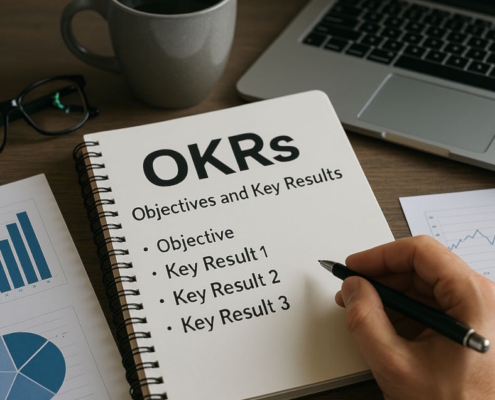What is the meaning of condition precedent?
A condition precedent in a contract makes one party’s performance dependent on their satisfaction is enforceable and not considered illusory or lacking in mutual obligation if the satisfaction is determined either (i) based on an objective, reasonable person standard as determined by the courts, or (ii) through a good faith evaluation, regardless of whether it is deemed reasonable. (Mattei v. Hopper (1958) 51 Cal.2d 119.)
Condition Precedent Examples
- Home Renovation Contract
In a condition precedent example, a homeowner hires a contractor to renovate their kitchen. The contract specifies that the final payment is due only if the homeowner is satisfied with the completed work. This satisfaction must be determined either by a reasonable person’s standard or by the homeowner’s good faith judgment.
- Condition Precedent Met: The homeowner finds that the contractor followed the agreed-upon design plans, used quality materials, and finished within the deadline. The homeowner expresses satisfaction based on a reasonable standard or in good faith, thus the contractor is entitled to the final payment.
- Condition Precedent Not Met: The contractor deviated from the design, used substandard materials, or failed to complete the project on time. The homeowner, acting in good faith or based on a reasonable person’s standard, expresses dissatisfaction. In this case, the condition precedent is not met, and the homeowner is not obligated to make the final payment.
- Portrait Photography Agreement
A condition precedent example is found in an agreement where a photographer is hired to take portraits. The contract states that the client must pay the final 30% of the fee if they are satisfied with the photos. The client’s satisfaction is determined by either an objective standard or in good faith.
- Condition Precedent Met: The photographer captures high-quality portraits that align with the client’s expectations and any specified requirements. The client, acting reasonably or in good faith, expresses satisfaction, and the final 30% payment is due.
- Condition Precedent Not Met: The client reviews the photos and finds that they are out of focus, poorly lit, or not in line with the agreed concept. The client’s dissatisfaction is either reasonable or expressed in good faith. As a result, the condition precedent is not met, and the photographer is not entitled to the final payment.
- Marketing Services Agreement
In this condition precedent example, a business contracts with a marketing agency to rebrand its image. The contract states that the final payment is contingent on the business being satisfied with the new branding materials. Satisfaction must be assessed reasonably or in good faith.
- Condition Precedent Met: The marketing agency successfully delivers the new branding materials, which align with the business’s goals and specifications. The business reviews the materials, finds them suitable, and expresses satisfaction in good faith or based on a reasonable person standard. The agency is entitled to the final payment.
- Condition Precedent Not Met: The agency fails to deliver the materials on time, or the branding does not align with the business’s goals or specifications. The business expresses dissatisfaction in good faith or based on a reasonable standard. As a result, the condition precedent is not met, and the business is not obligated to make the final payment.
- Interior Design Contract
In this condition precedent example, an interior designer is hired to furnish a restaurant. The contract specifies that the owner must be satisfied before releasing the final payment, which is based on reasonable standards or good faith.
- Condition Precedent Met: The interior designer completes the project on time, following the agreed design concept and quality expectations. The restaurant owner, reasonably or in good faith, expresses satisfaction, and the designer is entitled to the final payment.
- Condition Precedent Not Met: The interior designer delivers a subpar result, deviating significantly from the design concept or quality. The owner, acting reasonably or in good faith, expresses dissatisfaction, and the condition precedent is not met. Thus, the owner is not required to make the final payment.
- Software Development Contract
A condition precedent example occurs when a company hires a developer to create a custom software solution. The contract states that full payment is due only if the company is satisfied with the software’s functionality, judged by a reasonable standard or in good faith.
- Condition Precedent Met: The developer delivers the software with all required features functioning correctly and as per the company’s needs. The company, acting reasonably or in good faith, expresses satisfaction, and the developer is entitled to full payment.
- Condition Precedent Not Met: The software fails to meet the functional requirements or contains significant bugs. The company, reasonably or in good faith, expresses dissatisfaction, meaning the condition precedent is not met, and the company is not obligated to pay in full.
What is the difference between condition subsequent and precedent?
Condition precedent vs condition subsequent can be understood as the distinction between a condition that must be fulfilled for an obligation to begin (condition precedent) and a condition that, if it occurs, ends an existing obligation (condition subsequent).
- Condition Precedent: Must occur before a duty arises specified in a contract.
- Condition Subsequent: If it occurs, it terminates an existing duty specified in a contract.
Condition Precedent
A condition precedent is an event or action that must occur or be performed before a party’s contractual obligation becomes due. In other words, it is a condition that needs to be fulfilled to trigger the duty of performance. If the condition precedent does not happen, the related contractual obligation does not arise.
Example: A contract for the sale of a house might require the buyer to secure financing as a condition precedent. If the buyer fails to obtain financing, the seller is not obligated to transfer ownership.
Condition Subsequent
A condition subsequent is an event or action that, if it occurs, terminates an already existing duty or obligation under the contract. It serves as a mechanism to end or discharge a contractual obligation that has already been established. The occurrence of the condition subsequent results in the party being released from further performance.
Example: An employment contract might state that continued employment is contingent on maintaining a professional license. If the employee loses their license (the condition subsequent), the employer can terminate the contract without breaching it.
Element 1: Presence of a Satisfaction Clause in Contract
A satisfaction clause is a contract provision that establishes a condition precedent, making one party’s obligation to perform dependent on their satisfaction with the other party’s performance or a particular aspect of the contract. (Pmc, Inc. v. Porthole Yachts (1998) 65 Cal.App.4th 882.)
Example: In a landscaping contract, a satisfaction clause serves as a condition precedent by stating that the homeowner must be satisfied with the completed garden design before making the final payment. This means the landscaper’s right to receive full payment is contingent upon the homeowner’s satisfaction, based either on a reasonable standard or in good faith.
Choice of Test
If a contract provision establishes a condition precedent by making one party’s performance dependent on their satisfaction with the other party’s performance or the status of something related to the contract, the court will determine the appropriateness of this “satisfaction clause” by applying either an objective or subjective test. (Kadner v. Shields (1971) 20 Cal.App.3d 251.)
The choice between an objective or subjective test in relation to a condition precedent depends on the actual or legally presumed intent of the parties. This distinction between the two tests is not rigid but varies by degree. The decision can be guided by clear language within the contract. However, when the contract does not explicitly specify or provide a clear indication, the law favors applying the less arbitrary standard of a reasonable person. (Id.)
When a contract is subject to two different interpretations regarding a condition precedent, the court must opt for the interpretation that makes the contract legally binding, as long as this choice does not contradict the intent of the parties. (People v. Morgan (2010) Cal.App.Unpub. LEXIS 464, citing Bleecher v. Conte (1981) 173 Cal. Rptr. 278).
Validity of Contract – Good Faith & Fair Dealing
When a contract grants one party discretionary power that impacts the rights of another, it imposes a duty to exercise that discretion in good faith and with fair dealing. The absence of an explicit requirement for reasonableness or good faith does not indicate a lack of sufficient legal consideration or mutual obligation within the condition precedent. (Bevis v. Terrace View Partners, LP (2019) 33 Cal.App.5th 230.)
Satisfaction Clause Limited by Implied Duty to Use Good Faith
A satisfaction clause requiring the buyers to approve termite and roof inspection reports was subject to an implied duty to act in good faith and with diligence, ensuring the contract remained valid and not void for lack of mutual obligation. (Converse v. Fong (1984) 159 Cal.App.3d 86.)
Example: In a real estate purchase agreement, there is a condition precedent stating that the buyer must be satisfied with the results of a termite and roof inspection before proceeding with the sale. Even though the buyer has the discretion to approve or reject the reports, they must do so in good faith and with reasonable diligence, ensuring that the contract retains its mutual obligations.
Contract Permits One Party to Set or Change the Price
A contract provision that allows one party to set the price or determine their performance at their sole discretion is typically unenforceable. However, if a contract gives one party the right to set or change the price of goods or services, it is not considered illusory, as that party is still bound by a duty of good faith and fair dealing in fulfilling the condition precedent. (Perdue v. Crocker Nat’l Bank (1985) 38 Cal.3d 913.)
Provision Stating Football Player Would Be Paid Even if Performance Was Unsatisfactory Is Valid
A contract provision stating that a football player would receive payment regardless of whether his performance was unsatisfactory or if he did not play at all was considered valid. (National Football League Players’ Ass’n v. National Football League Management Council (1986) 188 Cal.App.3d.)
Element 2: Good Faith Dissatisfaction with Performance
Good Faith in Satisfaction Clauses
When a condition precedent in a contract involves a party’s determination of satisfaction, it must be made in good faith and be based on genuine dissatisfaction with the other party’s performance or the item subject to approval, rather than with the contract itself. (PMC, Inc. v. Porthole Yachts, Ltd. (1998) 65 Cal.App.4th 882.)
Objective Test/Reasonable Person Standard
Under the objective test or reasonable person standard, when a condition precedent involves satisfaction regarding commercial value, quality, operative fitness, or mechanical utility, the court will determine whether satisfaction has been reasonably achieved. In such cases, dissatisfaction cannot be arbitrary, unreasonable, or capricious. (Kadner v. Shields (1971) 20 Cal.App.3d 251.)
Example: A building contract requiring the installation of a plumbing, heating, and ventilation system to the owner’s satisfaction creates a condition precedent related to operative fitness or mechanical utility. In this case, the work must be performed in a way that would satisfy a reasonable person. (Thomas Haverty Co. v. Jones (1921) 185 Cal. 285.)
Determining Reasonableness Under a Condition Precedent
When using the reasonable person standard for a condition precedent, a party’s determination of dissatisfaction can still be considered unreasonable even if it is made in personal good faith. (Kadner v. Shields (1971) 20 Cal.App.3d 251.) For example, in a land sale contract, a satisfaction clause requiring the buyer’s approval of property encumbrances served as a condition precedent to the buyer’s obligation to purchase, not to the existence of the contract.
Satisfaction Based on Specific Plans and Specifications
If a condition precedent in a contract specifies performance in accordance with set plans and specifications to the satisfaction of the owner or architect, and the work is completed as required, the party whose judgment is invoked must accept the performance. In this case, the person’s mental state of satisfaction is immaterial. (PMC, Inc. v. Porthole Yachts, Ltd. (1998) 65 Cal.App.4th 882.)
Reasonable Standards in Purchase Agreements
When a satisfaction clause in a purchase agreement serves as a condition precedent, it must be subject to a reasonable person standard. For instance, a land sale contract may give purchasers the right to have a well tested for water availability, and the right to terminate the contract if the results are unsatisfactory. This does not create a mere option to purchase but establishes a condition precedent. (Lyon v. Giannoni (1959) 168 Cal.App.2d 336.)
Buyer’s Approval and Commercial Reasonableness
In a land sale contract, a condition precedent requiring the buyer’s approval of a soil compaction report and maps for the property is not considered illusory because the approval must be based on reasonable commercial standards for the purpose of subdivision. (Collins v. Vickter Manor, Inc., (1957) 47 Cal. 2d 875.)
Performance Bonds and Reasonable Standards
The sufficiency of a performance bond under a satisfaction clause in a construction contract must be evaluated using an objective reasonableness test, as it relates to a condition precedent. (Weisz Trucking Co. v. Emil R. Wohl Construction (1970) 13 Cal. App. 3d 256.)
Subjective Test for Satisfaction
When a contract provision creates a condition precedent based on a subjective test, such as requiring the buyer’s approval of reports and studies at their “sole judgment and discretion,” it remains valid as long as the buyer exercises that discretion in good faith. (Larwin-Southern Cal., Inc. v. JGB Inv. Co. (1979) 101 Cal.App.3d 626.)
Jury’s Role in Determining Bona Fide Dissatisfaction
In a satisfaction contract, what constitutes bona fide dissatisfaction under a condition precedent is a question for the jury. The jury’s role is limited to determining whether the dissatisfaction is genuine, without evaluating its reasonableness or the existence of “good cause” for termination. (Pugh v. See’s Candies, Inc. (1988) 203 Cal. App. 3d 743.)
Triable Issues of Fact Regarding Dissatisfaction
If there are allegations or evidence showing reasons other than dissatisfaction for terminating a contract under a condition precedent, it can raise a triable issue of fact as to whether the dissatisfaction was genuinely bona fide. (Locke v. Warner Bros., Inc. (1997) 57 Cal.App.4th 354.)
Good Faith in Sole Satisfaction Determination
When a party agrees to perform under a contract to the satisfaction of another as a condition precedent, the other party becomes the sole judge of their satisfaction, regardless of the justice or reasonableness of their decision. Courts or juries cannot overrule a party’s assertion of dissatisfaction, provided it is made in good faith. (Leboire v. Royce (1960) 53 Cal.2d 659.)
Example: A contract requiring an employee’s performance to be to the “satisfaction” of the employer establishes a condition precedent. If the employer is dissatisfied in good faith, this dissatisfaction is conclusive, regardless of whether a reasonable person would share the same view. (Crillo v. Curtola (1949) 91 Cal.App.2d.)
Approval of Third Person as Condition Precedent
When a contract involves work to be done to the satisfaction of a third person, proven by a certificate, the production of such a certificate is a condition precedent to any right of action under the contract. (Patrick J. Ruane, Inc. v. Parker (1960) 185 Cal.App.2d 488.)
Third-Party Certificate Requirement and Exceptions
However, if a condition precedent in a contract requires an architect’s certification of satisfaction and the architect unreasonably refuses to issue the certificate, the party seeking performance is not required to produce the certificate as a condition for pursuing a breach of contract claim. (Id.)
Architect Substitution and Performance Requirement
If an architect named in a condition precedent is discharged, and another is hired without an agreement to substitute, performance to the satisfaction of the new architect is not required. (Id.)
Remedies
Specific Performance
In a case where the plaintiff was allowed to amend the complaint to seek both damages and the equitable remedy of specific performance, the court applied a less stringent examination of the contract’s terms compared to what would be required solely for equitable relief. (Larwin-Southern Cal., Inc. v. JGB Inv. Co. (1979) 101 Cal.App.3d 626.)
Rescission
A purchaser was granted the right to rescind a land sale contract and recover their deposit due to dissatisfaction with the subdivision map, demonstrating that dissatisfaction can serve as a basis for rescission. (Rodriguez v. Barnett (1959) 52 Cal.2d 154.)
Statute of Limitations
Statute of Limitations for Written Contracts
The statute of limitations for enforcing a written contract is four years. (Civ. Proc. Code § 337(1)).
Statute of Limitations for Oral Contracts
The statute of limitations for enforcing an oral contract is two years. (Civ. Proc. Code § 339(1)).
Affirmative Defenses
Bad Faith: A party may raise bad faith as an affirmative defense to a breach of contract claim by showing that the other party failed to fulfill a condition precedent in good faith. Every contract in California includes an implied covenant of good faith and fair dealing, requiring parties not to interfere with the other’s right to receive the benefits of the contract. If a party acts in bad faith in failing to fulfill a condition precedent, it can negate their breach of contract claim.
Fraud: Fraud can serve as an affirmative defense to a breach of contract if one party proves that the other party intentionally misrepresented or concealed a material fact, thereby inducing the party into entering the contract. In cases where a condition precedent is fulfilled based on fraudulent misrepresentations, the defrauded party may assert this defense to excuse their own performance and void the contract.
Failure of Consideration: Failure of consideration may be asserted as a defense if the promised exchange or condition precedent within the contract was not met, became worthless, or ceased to exist. When the consideration or fulfillment of a condition precedent does not occur as agreed, the other party’s performance may be excused due to this failure, rendering the contract unenforceable.
Lack of Mutuality of Obligation: A defense of lack of mutuality of obligation may be raised if one party claims that a condition precedent necessary for creating mutual obligations was not met. Contracts must bind both parties to some reciprocal duties. If only one party is bound while the other has no corresponding duty, it challenges the enforceability of the contract due to a lack of mutuality, making the condition precedent a central issue in the defense.
Premature Rejection: Premature rejection can be asserted as a defense when a party is accused of breaching the contract for refusing goods or services before a condition precedent for performance was completed. This defense argues that the party’s rejection was reasonable because the required condition precedent was not yet satisfied. It is particularly relevant when the timing or quality of goods and services delivered must meet specific standards before acceptance is due.






























